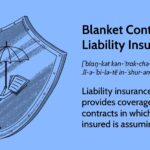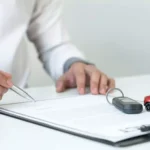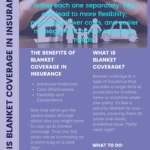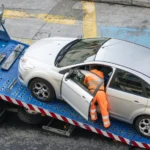If you’ve ever found yourself scratching your head trying to decipher the alphabet soup of auto insurance terms, you’re not alone. PLPD is one of those common acronyms that can leave you wondering what exactly it means and why it matters.
In a nutshell, PLPD insurance covers the other driver’s vehicle damage and medical bills when you’re at fault for an auto accident. It’s a type of liability coverage that protects you financially if you’re responsible for causing harm to someone else on the road.

In this article, we’ll dive deeper into PLPD coverage, explaining what it includes, how it works, and why it’s such an important part of your auto insurance policy. So buckle up and let’s demystify this crucial coverage together!
What is PLPD Insurance Coverage?
PLPD insurance coverage, which stands for Personal Liability and Property Damage, is a type of auto insurance that covers the other driver’s vehicle damage and medical bills when you’re at fault for an accident. In other words, if you cause a crash that injures someone else or damages their property, your PLPD coverage will help pay for their expenses, up to your policy limits.
What Does PLPD Stand For?
First off, let’s demystify that acronym. PLPD stands for “Personal Liability and Property Damage” coverage. In a nutshell, it covers damages and injuries you cause to other people and their property when you’re at fault in a car accident. Think of it like a safety net that protects you financially if you’re liable for an accident.
Here’s a quick breakdown of what each part means:
- Personal Liability: This covers injuries you cause to other people, like medical bills, lost wages, pain and suffering, etc.
- Property Damage: This pays for damage you cause to other people’s property, mainly their vehicle.
So if you’re in an at-fault accident and the other driver is hurt or their car is damaged, your PLPD coverage would kick in to cover those costs up to your policy limits.
How Does PLPD Coverage Work?
Alright, now that we know what PLPD covers, let’s talk about how it works in practice. When you buy auto insurance, you’ll choose your PLPD coverage limits, which is the maximum amount your insurance will pay out for a covered claim.
PLPD limits are usually written like this: 25/50/25. Here’s what those numbers mean:
| Coverage | Limit | What It Means |
|---|---|---|
| Bodily Injury Liability Per Person | $25,000 | Maximum payout for injuries per person you injure |
| Bodily Injury Liability Per Accident | $50,000 | Maximum total payout for all injuries in one accident |
| Property Damage Liability | $25,000 | Maximum payout for all property damage in one accident |
So using the example above, if you caused an accident that injured one person and damaged their car, your PLPD would cover up to $25,000 of their medical bills and up to $25,000 to repair or replace their car.
If multiple people were injured, your bodily injury liability coverage would max out at $50,000 total for all of them.
Keep in mind, that once you hit your limits, you’re personally on the hook for anything above that amount. So it’s important to choose limits that reflect your risk tolerance and financial situation.
Is PLPD Coverage Required?
That it depends on where you live. Most states have some minimum level of liability coverage you’re required to carry to legally drive. And you guessed it, those minimums are usually expressed in PLPD terms.
For example, California requires at least 15/30/5 in liability coverage. Translation: $15,000 per person $30,000 per accident in bodily injury liability, and $5,000 in property damage liability.
Other states require more, some require less. You’ll want to check your state’s specific laws to see what’s mandatory.
But here’s the thing – just because your state requires a certain minimum PLPD doesn’t necessarily mean that’s enough coverage.
Those state minimums are often pretty low, meaning you could be on the hook for a lot of money if you cause a serious accident. That’s why most insurance experts recommend buying higher PLPD limits if you can afford it.
What Doesn’t PLPD Cover?
It’s important to know that while PLPD offers valuable protection, it doesn’t cover everything. Here are some key things that are not included in PLPD coverage:
Your Own Injuries or Vehicle Damage
PLPD only covers damages and injuries you cause to other people and their property. It won’t pay for your medical bills or repairs to your car if you’re at fault in an accident.
For that, you’d need coverages like Personal Injury Protection, Medical Payments, or Collision.
Damage From Non-Accident Events
If your car is damaged by something other than a collision, like theft, vandalism, hail, or flooding, PLPD won’t cover it. You’d need Comprehensive coverage for those kinds of events.
Damage That Exceeds Your Limits
As we mentioned before, PLPD will only pay out up to your chosen limits. Anything beyond that is your responsibility. That’s why it’s risky to carry too-low limits, especially if you have significant assets to protect.
How Much PLPD Coverage Do I Need?
Ah, the million-dollar question! The truth is, there’s no one-size-fits-all answer. The right PLPD limits for you will depend on factors like your assets, risk tolerance, budget, and state requirements.
As a general rule of thumb, it’s smart to buy as much PLPD as you can comfortably afford. Think about it this way – if you cause an accident and get sued, how much could you afford to pay out of pocket? Probably not much, right? Having higher PLPD limits gives you an extra cushion of protection.
Here are some things to consider when choosing your PLPD limits:
- Your assets: The more you have to lose, the more coverage you may want. If you have significant savings, investments, or property, you’ll want enough PLPD to shield those assets from lawsuits.
- Your risk factors: Do you drive a lot? In heavy traffic or bad weather? With kids or pets in the car? All of these increase your chances of an accident, and thus your chances of needing to rely on your PLPD.
- Your budget: Of course, you’ll need to balance your coverage needs with what you can afford. Get quotes for a few different PLPD limits to see how much it impacts your premium. A little bit of extra coverage can go a long way.
- Your state laws: At the very least, you’ll need to carry your state’s minimum required PLPD. But again, consider those a starting point, not necessarily the ending point.
If you’re not sure what PLPD limits make sense for you, talk to your insurance agent. They can look at your specific situation and help you choose appropriate coverage.
How to Save on PLPD Coverage
We get it – insurance can be expensive, and you’re probably looking for ways to save. The good news is, that there are a few strategies you can use to get more affordable PLPD coverage:
Shop Around for Quotes
Not all insurance companies charge the same for PLPD. Get quotes from a few different insurers to see who offers the best rates for the coverage you need. Just make sure you’re comparing apples to apples in terms of limits and deductibles.
Bundle Your Policies
Many insurers offer discounts if you buy multiple policies with them, like auto and home or renters insurance. Bundling your coverage can shave some serious dough off your premiums.
Raise Your Deductible
Your PLPD coverage doesn’t have a deductible, but your other coverages like Collision and Comprehensive do. Raising those deductibles means you’ll pay more out of pocket for a claim, but it also means lower premiums. Just make sure you have enough savings to cover your deductible if needed.
Maintain a Clean Driving Record
This one’s a biggie. Insurance companies love safe drivers, and they often reward them with lower rates. Avoid accidents and tickets, and you could see your premiums drop over time. Consider taking a defensive driving course for an extra discount.
The Bottom Line on PLPD
We’ve covered a lot of ground here, so let’s recap the key points about PLPD insurance coverage:
- PLPD covers injuries and property damage you cause to others in an at-fault accident
- It’s required by law in most states, but the minimum limits vary
- It doesn’t cover your own injuries vehicle damage, or non-accident events
- Choose your PLPD limits based on your assets, risk factors, budget, and state laws
- You can save on PLPD by shopping around, bundling policies, raising deductibles, and maintaining a clean driving record
At the end of the day, PLPD coverage is an essential part of your auto insurance policy. It protects you financially if you’re responsible for an accident, and it’s required by law in most places. So while it may be tempting to skimp on this coverage to save a few bucks, that’s a risky move that could cost you big time down the road.
Instead, be a smart, savvy insurance shopper. Understand what PLPD covers, choose appropriate limits for your situation, and then look for ways to save on your premiums without sacrificing important coverage. Your future self (and your wallet) will thank you!
We hope this guide has demystified PLPD insurance coverage for you. Remember, knowledge is power when it comes to insurance. The more you understand your coverage, the better prepared you’ll be to handle whatever life throws your way.






3 thoughts on “What is PLPD insurance coverage?”